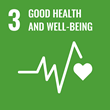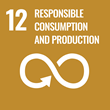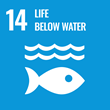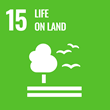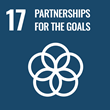Project information
Breaking the walls between human health and environmental testing of endocrine disrupters: EndocRine Guideline Optimisation
(ERGO)

- Project Identification
- 825753
- Project Period
- 1/2019 - 6/2024
- Investor / Pogramme / Project type
-
European Union
- Horizon 2020
- Health, demographic change and wellbeing (Societal Challenges)
- MU Faculty or unit
-
Faculty of Science
- doc. Mgr. Klára Hilscherová, Ph.D.
- Mgr. Ondřej Brózman, Ph.D.
- Mgr. Denisa Horáková
- Ing. Sabina Hřibová
- Mgr. Veronika Janečková, Ph.D.
- Mgr. Jiří Novák, Ph.D.
- Ing. Marie Smutná, Ph.D.
- Cooperating Organization
-
Ruprecht-Karls-Universität Heidelberg
National Center for Scientific Research
University of Antwerpen
Aarhus Universitet
Helmholtz Zentrum für Umweltforschung GmbH-UFZ
Forschungsverbund Berlin e.V.
Environmental law office
SYDDANSK UNIVERSITET
- Responsible person Dr. Henrik Holbech
ERGO presents a new approach that will support a paradigm shift in the regulatory use of standardized test guidelines (TGs) by breaking the existing wall between mammalian and non-mammalian vertebrate testing and assessment of endocrine disrupting chemicals (EDCs). The highly conserved thyroid system will be used as the “proof of concept”, but also other conserved endocrine axes/systems such as the Retinoid X Receptor (RXR) and the Hypothalamus Pituitary Gonadal (HPG) axis can be adapted to the cross-vertebrate class approach. ERGO will investigate a battery of draft in vitro assays and evaluate thyroid-responsive biomarkers and endpoints (B/E) suitable for extrapolation of effects from fish and amphibian tests to humans and other mammals (and vice versa) and finally validate successful B/E for inclusion in existing in vivo or new in vitro OECD TGs. A cross-class adverse outcome pathway (AOP) network will provide the scientifically plausible and evidence-based foundation for the selection of B/E in lower vertebrate assays predictive of human health outcomes. In silico modeling and biotransformation data will support cross-vertebrate class effect extrapolation. Major outcomes of ERGO will be: 1) New thyroid-related B/E for inclusion in OECD TGs for improved identification of TDC. 2) An Integrated Approach to Testing and Assessment (IATA) of chemicals for TD based on a multi-class vertebrate AOP network connecting endocrine mechanisms in one vertebrate class to adverse outcomes in another class for safer regulation of EDCs. 3) A tool for TG end users, such as regulators and industry, to extrapolate thyroid effects between vertebrate classes. Implementation of the ERGO IATA strategy in regulations of EDC will make hazard and risk assessment faster, cheaper, simpler and safer and support industry in the development of EDC-free products beneficial for environmental and human safety.
Sustainable Development Goals
Masaryk University is committed to the UN Sustainable Development Goals, which aim to improve the conditions and quality of life on our planet by 2030.
Publications
Total number of publications: 9
2025
-
Advancing in vitro assessment of iodide uptake inhibition: integrating a novel biotransformation pretreatment step
Archives of Toxicology, year: 2025, volume: 99, edition: 7, DOI
-
Determination of Thyroid Hormones and 11 Metabolites in the Human Serum Using a Simple Derivatization Strategy and Analysis by Isotope-Dilution Liquid Chromatography Tandem Mass Spectrometry
Analytical chemistry, year: 2025, volume: 97, edition: 17, DOI
-
On the Utilization and Characterization of External Biotransformation Systems in In Vitro Toxicology: A Critical Review of the Scientific Literature with Guidance Recommendations
ACS ENVIRONMENTAL AU, year: 2025, DOI
2024
-
In silico bioavailability triggers applied to direct and indirect thyroid hormone disruptors
Chemosphere, year: 2024, volume: 348, edition: January, DOI
-
In vitro assessment of thyroid peroxidase inhibition by chemical exposure: comparison of cell models and detection methods
Archives of Toxicology, year: 2024, volume: 98, edition: 8, DOI
-
The thyroid hormone system disrupting potential of resorcinol in fish
Ecotoxicology and Environmental Safety, year: 2024, volume: 284, edition: October 2024, DOI
2023
-
Effects of all-trans and 9-cis retinoic acid on differentiating human neural stem cells in vitro
Toxicology, year: 2023, volume: 487, edition: March 2023, DOI
2021
-
Highlighting the gaps in hazard and risk assessment of unregulated Endocrine Active Substances in surface waters: retinoids as a European case study
Environmental Sciences Europe, year: 2021, volume: 33, edition: 1, DOI
2020
-
ERGO: Breaking Down the Wall between Human Health and Environmental Testing of Endocrine Disrupters
International Journal of Molecular Sciences, year: 2020, volume: 21, edition: 8, DOI
